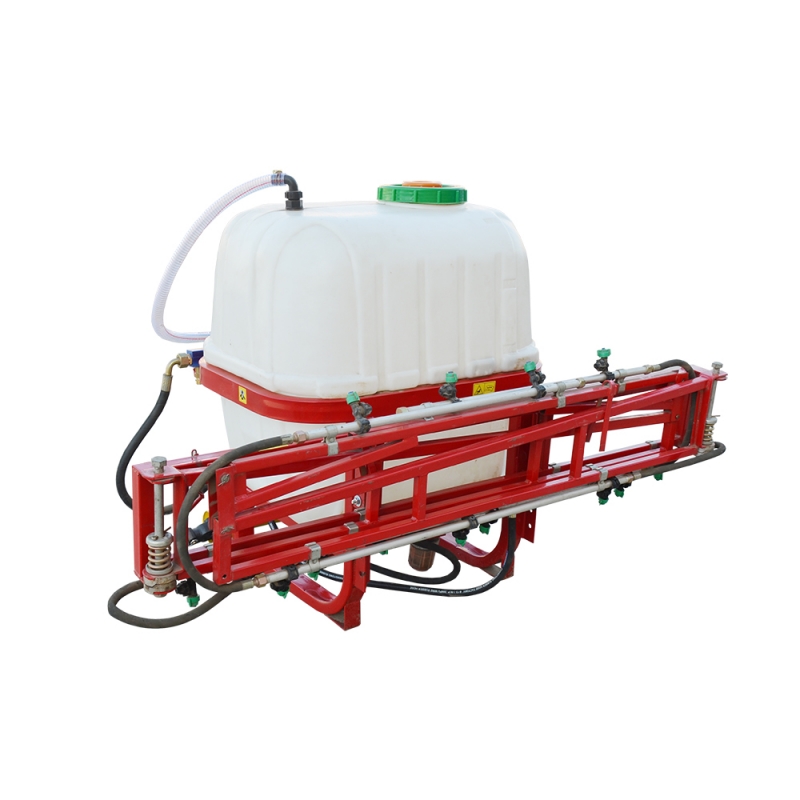How to Troubleshoot Your 3 Point Hitch Sprayer?
2024-09-17

How does a 3 Point Hitch Sprayer work?
The Sprayer is attached to the tractor using the three-point hitch system. The hydraulic system of the tractor pumps the chemical to the sprayer through hoses and nozzles that evenly distribute the chemical on the crops. The Sprayer comes with a pressure gauge, adjustable spray nozzles, and other devices.What are the common problems that farmers face with the 3 Point Hitch Sprayer?
Farmers often encounter problems with their Sprayer, such as leaky hoses, clogged nozzles, a faulty pump, or low pressure. These problems can lead to uneven application and reduced effectiveness of the chemicals used.How to troubleshoot 3 Point Hitch Sprayer problems?
To troubleshoot a Sprayer, start by checking the hoses, nozzles, and fittings for leaks. Clean or replace the clogged nozzles and filters and make necessary adjustments to the pressure or flow rate of the pump. In case of severe problems, it's advisable to seek the help of a professional. In summary, a 3 Point Hitch Sprayer is an essential agricultural equipment that farmers use for efficient spraying on crops. Regular maintenance and timely troubleshooting can ensure the effective and long-lasting use of this equipment.Baoding Harvester Import And Export Trading Co., Ltd is a leading supplier of Agricultural Equipment and Machinery. We provide quality products and services to our clients worldwide. For any inquiries or assistance, please email us at Catherine@harvestermachinery.com.
REFERENCES
Darwent, M. A. (2018). Pesticide application methods (Chapter 9). In Handbook of Pesticides (pp. 233-255). CRC Press.
Ball, D. A., & Miller, G. L. (2019). Spray application technology for pesticide application (Chapter 3). In Innovations in Agricultural and Biological Engineering (pp. 47-79). Springer, Cham.
Austin, G., & Bellinder, R. (2017). Proper calibration and maintenance of pesticide application equipment. Crop and Soil Sciences, Cornell Cooperative Extension Publication, 1702, 3-5.
Kolarič, R., Trebše, P., Rajkovič, V., Hočevar, M., & Kuzmanović, Ž. (2020). Influence of Spray Nozzle Type on Efficiency of Pesticide Application. Acta agriculturae Slovenica, 115(1), 15-22.
Liu, A., Buser, M. D., Ahearn, M. E., & Zhu, H. (2019). Effect of sprayer type and nozzle type on spray deposition of aerosolized particles. Journal of occupational and environmental hygiene, 16(2), 77-85.
Rivero-Morales, A., & Monroy-Ruíz, J. (2017). Calibration of a pesticide sprayer of backpack type. Agrarian Sciences, 26(4).
Lammers, P. S., & Wolf, W. (2018). Calibration of pesticide applicators for ornamentals. In Integrated Pest Management for Floriculture and Nurseries (pp. 97-107). Springer, Cham.
Yan, K., Xue, B., Li, Y., Li, J., & Yang, R. (2019). Study on anti-clogging performance of hollow-core injectors under low-pressure spraying conditions. PloS one, 14(11), e0225410.
Singh, G., Kumar, S., & Singh, A. (2020). Development of an Agrochemical Sprayer using Pneumatic Pressure. International Journal of Agricultural and Biological Engineering, 13(5), 29-36.
Gan et al. (2018). Design of agricultural drone sprayer based on FPGA. IOP Conference Series: Earth and Environmental Science, 153(1), 012015.
Silva, T. S., Gusmão, L. P., Cardoso, G. D. P., & Duarte, M. M. (2021). Control Development of an Unmanned Aerial System for Use in Agricultural Spraying. Journal of Automation, Mobile Robotics and Intelligent Systems, 15(1), 7-17.




